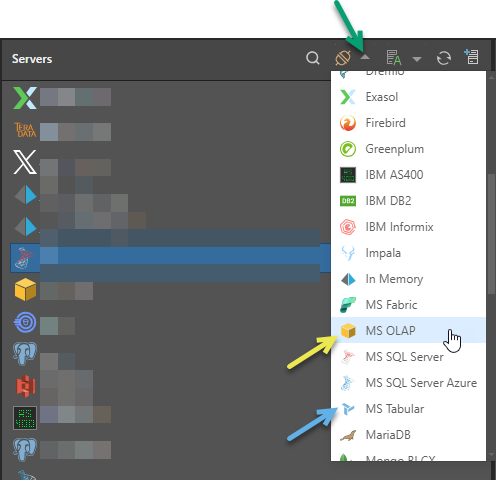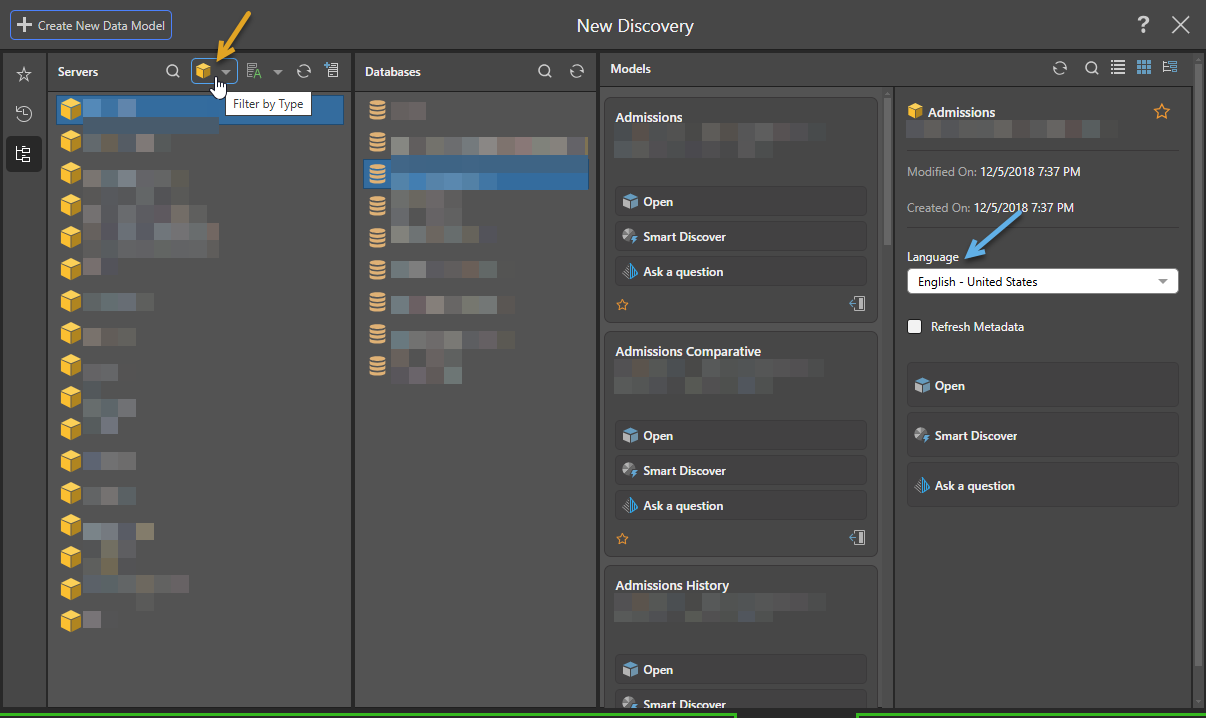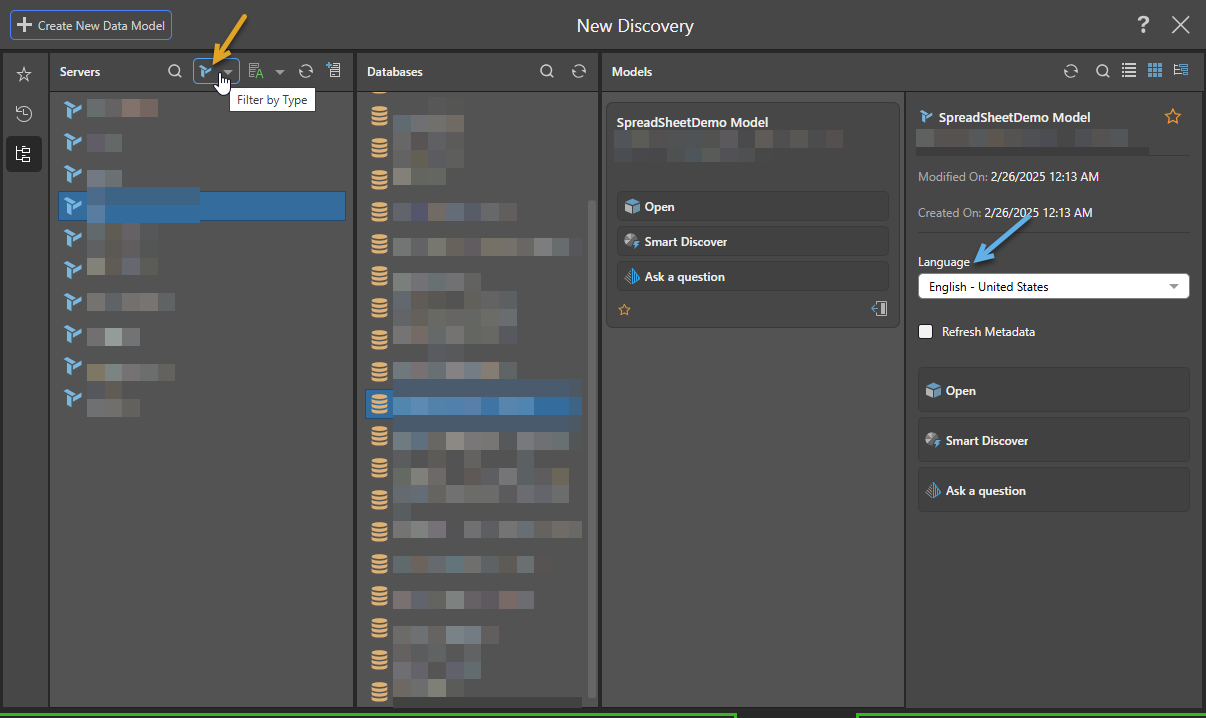Microsoft OLAP, Microsoft Tabular, and Power BI models that have been added by the Admin can be directly queried from Discover; this means that there is no need to build a Data Flow for these types.
Important: Power BI is modeled with the MS Tabular Server Type in Pyramid.
Selecting the MS Models
When opening a New Discovery:
- Select the MS OLAP or MS Tabular server type from the Servers list, then select the relevant Database as usual.
- In the Models panel, select the relevant model to directly query the cube in Discover.

Note that these models are denoted by the Cube icon (for MS OLAP) or Tabular icon (for MS Tabular or Power BI), rather than the standard Pyramid data model icon ![]() .
.
Direct Querying
Pyramid direct querying OLAP, Tabular, and Power BI models, eliminates the need to copy the data into Pyramid and configure the model. Pyramid uses MDX to natively query the cube, enabling support for a range of OLAP, Tabular, and Power BI functionality.
Direct querying saves users time on building data models in Pyramid, saves Pyramid resources that would otherwise be needed for scheduled reprocessing of data models, and ensures that your queries are based on the latest data.
Connect to OLAP, Tabular, and Power BI Models
To connect to OLAP, Tabular, and Power BI models, open a new discovery and select the required OLAP or Tabular server. Then select the required database and data model as described above.
As usual, the information panel on the right displays metadata and querying options for the given data model. However, you will also see an additional Language option here (blue arrow below); you can choose a language that has been set in the cube to translate dimensions, members, and measures into that language. You can also set the language after opening the data model - click here to learn more.
MS OLAP
Note: The Servers list is filtered to show only the MS OLAP servers (orange arrow below).

MS Tabular and Power BI
Note: The Servers list is filtered to show only the MS Tabular servers (orange arrow below). This includes Power BI Servers.
